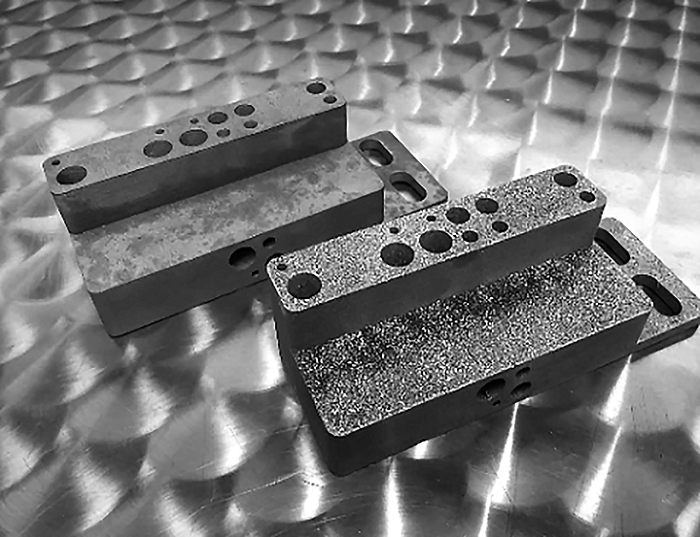ISO 2815 Buchholz Indentation Testing of Coatings
The ISO 2815 standard outlines a method to evaluate the hardness and indentation resistance of coatings using the Buchholz indentation testing technique. This test is particularly useful for assessing the performance of thin films, surface treatments, and post-processing materials in additive manufacturing (AM) applications. In the context of AM, this test can help ensure that coatings applied during or after the manufacturing process meet the required hardness specifications.
This method involves applying a specific load to the coating using a defined indenter tip under controlled conditions. The depth of indentation is measured, and from these measurements, the hardness value is calculated according to the ISO 2815 standard formula. This provides critical insights into the mechanical properties of the coating, which are essential for ensuring its durability and reliability in demanding applications.
The test can be performed on various types of coatings used in AM processes, including polymer-based films, metallic coatings, and ceramic layers. It is particularly valuable when assessing coatings applied during additive manufacturing to prevent defects such as cracking or delamination. The ISO 2815 standard ensures that the test results are consistent and comparable across different laboratories.
The Buchholz indentation testing method is widely used in quality assurance (QA) processes, regulatory compliance checks, and research and development (R&D) activities. Quality managers can rely on this test to validate the performance of coatings applied during AM processes, ensuring that they meet the necessary standards. Compliance officers can use it to demonstrate adherence to relevant international standards.
For R&D engineers, this test provides valuable data for optimizing coating formulations and improving the overall quality of AM products. Procurement professionals can ensure that suppliers meet stringent performance criteria by specifying ISO 2815 compliance in their contracts.
Scope and Methodology
The scope of the ISO 2815 Buchholz indentation test is to provide a standardized method for evaluating the hardness and indentation resistance of coatings. This method ensures that tests are conducted under controlled conditions, which allows for consistent and reproducible results.
- Specimens: The test can be performed on various types of coatings used in additive manufacturing processes.
- Instruments: A Buchholz type indenter is used to apply a specific load to the coating.
- Metric: Depth of indentation is measured and hardness values are calculated based on ISO 2815 standards.
The methodology involves applying a defined load using an indenter tip to the coating under controlled conditions. The depth of indentation is then measured, and from these measurements, the hardness value is determined according to the ISO 2815 standard formula. This ensures that the test results are consistent and comparable across different laboratories.
The Buchholz indentation testing method is particularly useful for assessing the performance of thin films, surface treatments, and post-processing materials in AM applications. It helps ensure that coatings applied during or after the manufacturing process meet the required hardness specifications, thereby preventing defects such as cracking or delamination.
Eurolab Advantages
EuroLab offers unparalleled expertise in ISO 2815 Buchholz indentation testing of coatings. Our team of highly skilled professionals ensures that every test is conducted with precision and accuracy, providing reliable results that are compliant with international standards.
- Expertise: Our laboratory personnel have extensive experience in additive manufacturing and surface treatment testing.
- Accreditation: We are fully accredited to perform tests according to ISO 2815 and other relevant standards.
- Technology: EuroLab utilizes state-of-the-art equipment for consistent and accurate results.
- Compliance: Our tests ensure that you meet all necessary regulatory requirements.
EuroLab's commitment to excellence is reflected in the quality of our services. We offer fast turnaround times, competitive pricing, and comprehensive reporting. Whether you need ISO 2815 testing for quality assurance or R&D purposes, EuroLab provides the expertise and resources you need.
Why Choose This Test
- Precision: The test ensures that coatings used in AM processes meet the required hardness specifications.
- Consistency: Results are consistent and comparable across different laboratories.
- Durability: By assessing indentation resistance, the test helps prevent defects such as cracking or delamination.
- Compliance: The test ensures that coatings meet all necessary regulatory requirements.
The ISO 2815 Buchholz indentation testing method is essential for ensuring the quality and durability of coatings used in additive manufacturing processes. This test provides critical insights into the mechanical properties of coatings, which are essential for ensuring their performance in demanding applications.





